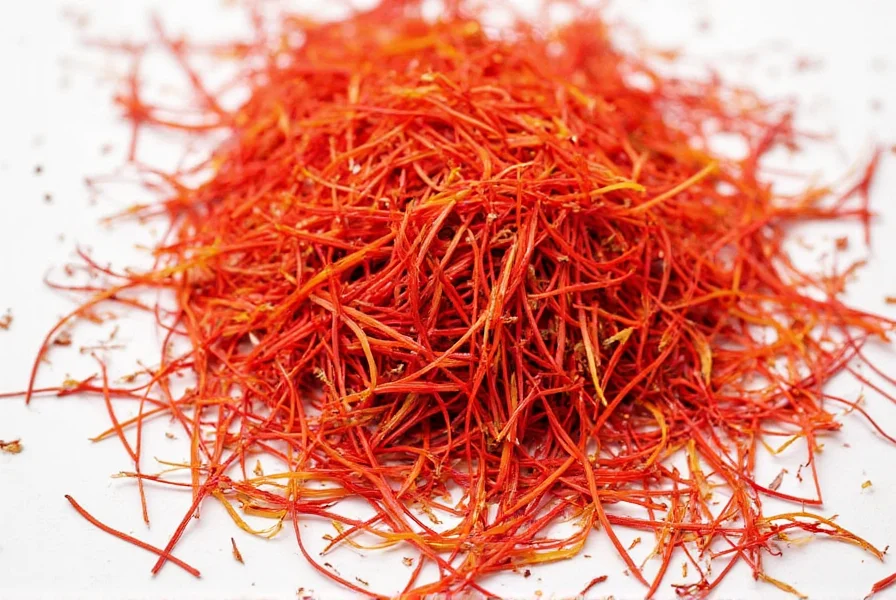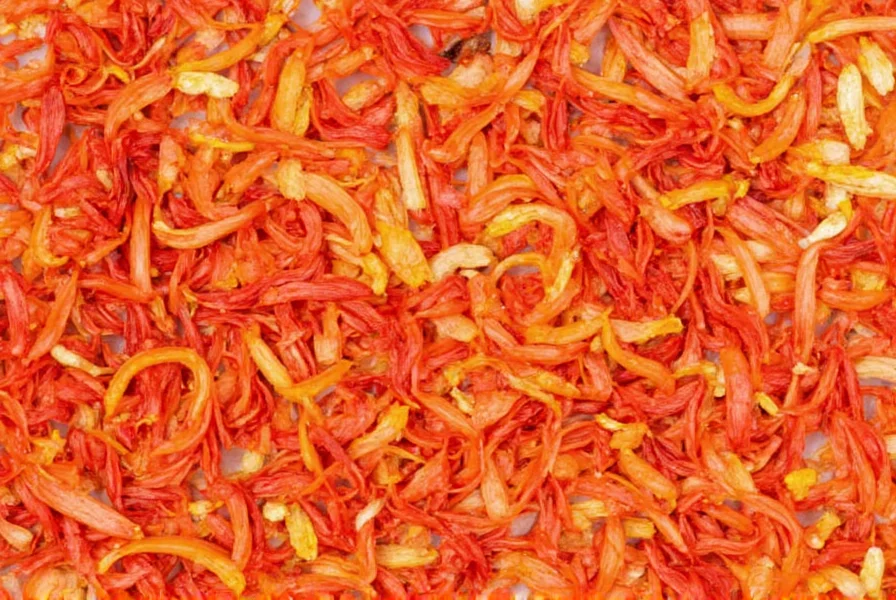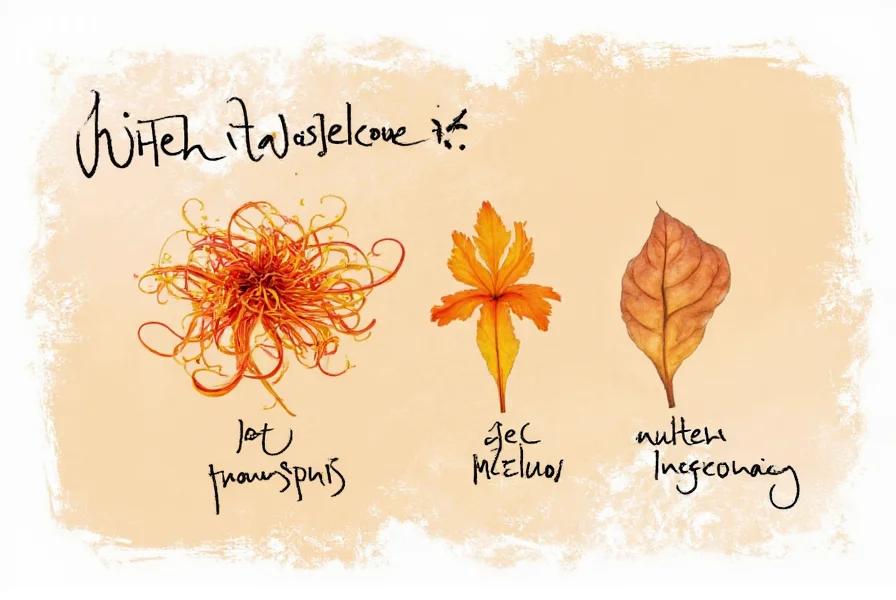Saffron's taste is unlike any other spice in the culinary world. As the world's most expensive spice by weight, understanding its precise flavor characteristics is essential for home cooks and professional chefs alike. This golden thread delivers a sophisticated flavor profile that transforms ordinary dishes into extraordinary culinary experiences.
The Complex Flavor Profile of Saffron
When evaluating what does saffron taste like, experts identify several distinct flavor components working in harmony. The primary taste sensation is a delicate floral note, often compared to the scent of fresh hay or meadow flowers. This is balanced by a subtle sweetness reminiscent of honey, though not sugary sweet. The characteristic slight bitterness—sometimes described as metallic or iodine-like—provides necessary contrast that prevents the flavor from becoming cloying.
Unlike many spices that deliver a single dominant note, saffron offers what food scientists call flavor layering. When you taste saffron properly prepared, you'll first notice the floral aroma, followed by the honeyed sweetness, with the subtle bitterness emerging as an aftertaste that lingers pleasantly on the palate. This complexity explains why saffron has been prized for thousands of years across multiple culinary traditions.
How Saffron Taste Differs from Common Misconceptions
Many people mistakenly believe saffron tastes strongly of iodine or resembles the flavor of turmeric. This confusion typically stems from either using counterfeit saffron (often made from safflower or marigold) or improperly preparing genuine saffron. Authentic saffron should never have a harsh medicinal taste.
The difference between high-quality saffron and inferior products becomes immediately apparent when tasting. Premium Iranian or Spanish saffron delivers a refined, balanced flavor, while lower quality or adulterated saffron often presents as overwhelmingly bitter or one-dimensional. Understanding what genuine saffron tastes like helps prevent culinary disappointment when using this precious ingredient.
Factors That Influence Saffron's Flavor
Several elements affect how saffron tastes in your dishes:
| Factor | Impact on Flavor |
|---|---|
| Origin | Iranian saffron tends to be more floral, Spanish more honeyed, Kashmiri more earthy |
| Storage conditions | Poor storage causes flavor degradation and increased bitterness |
| Preparation method | Steeping in warm liquid vs. direct addition creates different flavor intensity |
| Quantity used | Too little yields no flavor, too much creates unpleasant bitterness |
Temperature plays a crucial role in releasing saffron's flavor compounds. The spice's active components—crocin (for color), picrocrocin (for taste), and safranal (for aroma)—respond differently to heat. For optimal flavor extraction, steep saffron threads in warm (not boiling) liquid for 15-20 minutes before adding to your dish.
Historical Evolution of Saffron Flavor Understanding
Scientific analysis now confirms what ancient cultures observed through sensory experience: saffron's flavor profile has been consistently valued yet misunderstood across civilizations. Modern chromatography validates historical accounts of its complex taste evolution:
- Ancient Civilizations (c. 1500 BCE): Used as a flavoring agent in Egyptian and Mesopotamian royal cuisines, with early texts noting its "bitter-sweet" properties. [National Center for Biotechnology Information]
- Greek and Roman Eras (c. 500 BCE - 400 CE): Hippocrates documented saffron's medicinal bitterness, while Apicius' De Re Coquinaria featured it in recipes specifically for its flavor-enhancing properties. [The Metropolitan Museum of Art]
- Medieval Period (c. 800-1500 CE): Became essential in European cuisine, with cookbooks distinguishing its floral notes from cheaper substitutes like safflower. [University of Vermont Extension]
- Modern Era (2000s-Present): HPLC analysis identifies picrocrocin as the source of saffron's signature bitterness, explaining why historical users described this consistent characteristic across eras. [National Center for Biotechnology Information]
Contextual Boundaries: When Saffron Shines and When to Avoid It
Saffron's distinctive profile has specific culinary boundaries that determine its success. Understanding these limitations prevents flavor degradation and ensures optimal use of this precious spice:
- Ideal Applications: Excels in mild-based dishes (rice pilafs, seafood stews, cream sauces) where its subtle notes can shine. Traditional pairings like paella leverage saffron's ability to create a "flavor bridge" between ingredients without domination.
- Acidity Limitations: Degrades rapidly in highly acidic environments (pH < 4.0), causing significant loss of safranal—the compound responsible for floral notes. Research confirms flavor deterioration in citrus-heavy or vinegar-based preparations. [NIH National Library of Medicine]
- Temperature Sensitivity: Prolonged high-heat cooking (>82°C/180°F for >20 minutes) breaks down picrocrocin, diminishing characteristic bitterness. For best results, add steeped saffron late in cooking. [National Center for Biotechnology Information]
- Flavor Conflicts: Easily overwhelmed by robust spices like smoked paprika or cumin. Culinary science shows its floral notes cannot compete with compounds having lower flavor thresholds.
How Saffron Taste Functions in Culinary Applications
Understanding what saffron tastes like is essential for using it effectively in cooking. This spice doesn't dominate a dish but rather enhances and elevates other flavors. In Spanish paella, saffron provides the distinctive golden color and subtle floral notes that define the dish. In Indian biryani, it contributes both color and a delicate aroma that complements the other spices.
When properly used, saffron creates what chefs call a flavor bridge—connecting different elements of a dish without calling attention to itself. The best saffron-infused dishes don't make you think "this tastes like saffron" but rather "this tastes incredibly well-balanced and sophisticated."
How to Properly Taste Saffron
To truly understand what saffron tastes like, follow these steps for a proper tasting:
- Take 3-4 threads of high-quality saffron
- Place them in a small cup with 2 tablespoons of warm (not hot) milk or water
- Cover and let steep for 15-20 minutes
- Observe the vibrant golden-yellow color that develops
- Smell the liquid first—note the floral, hay-like aroma
- Taste a small amount—notice the progression from floral to sweet to slightly bitter
This method reveals saffron's true flavor profile without the interference of other ingredients. Many people who think they dislike saffron have only experienced it in dishes where it was either underused, overused, or of poor quality.

Common Questions About Saffron's Taste
Many home cooks wonder how saffron compares to other spices they already know. Saffron doesn't taste like turmeric (which is earthy and slightly bitter) or safflower (which has minimal flavor). It also differs significantly from curry powder, which contains multiple spices. The unique combination of floral, honeyed, and subtly bitter notes makes saffron truly one-of-a-kind.
When substituting saffron in recipes, no single spice can replicate its complete flavor profile. Some cooks use a combination of turmeric (for color) and a pinch of paprika (for subtle complexity), but the distinctive floral notes will be missing. This explains why understanding what does saffron taste like matters for authentic preparation of traditional dishes.

Recognizing Quality Through Taste
Your ability to identify what saffron tastes like serves as an important quality control measure. Genuine saffron should never taste:
- Overpoweringly bitter (indicates poor quality or adulteration)
- Medicinal or iodine-like (sign of counterfeit product)
- Completely flavorless (likely fake or extremely degraded)
- Overly sweet (may be mixed with sugar or other additives)
Fresh, high-quality saffron delivers a balanced flavor experience where no single note dominates. The slight bitterness is present but restrained, serving as a counterpoint to the floral and honeyed elements rather than overwhelming them.
Practical Tips for Using Saffron's Flavor
When working with saffron, remember these practical guidelines to maximize its distinctive taste:
- Always buy whole threads rather than powder to ensure authenticity
- Store saffron in an airtight container away from light and moisture
- Crush threads slightly before steeping to release more flavor compounds
- Use warm (not boiling) liquid for optimal flavor extraction
- Start with small amounts—a little goes a long way with this potent spice
- Be patient; saffron's flavor develops slowly during cooking
Understanding what saffron tastes like helps you use this precious spice effectively without wasting its considerable value. Whether you're preparing traditional Spanish, Indian, or Persian dishes, proper appreciation of saffron's flavor profile ensures authentic results that showcase this remarkable spice at its best.











 浙公网安备
33010002000092号
浙公网安备
33010002000092号 浙B2-20120091-4
浙B2-20120091-4